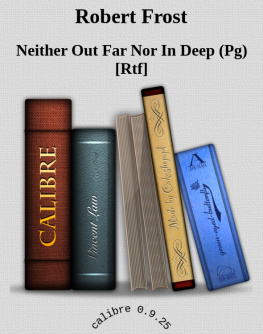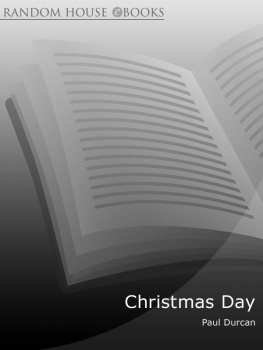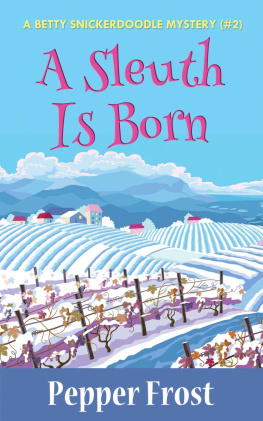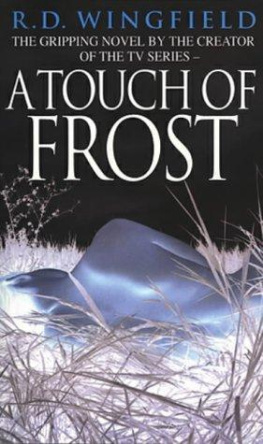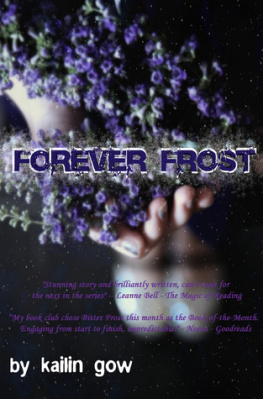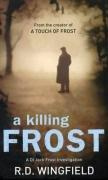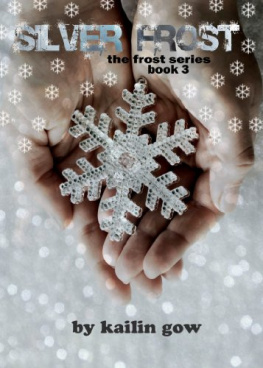Thinking about the Lifecourse
Thinking about the Lifecourse
A Psychosocial Introduction
Liz Frost and Stuart McClean
Liz Frost and Stuart McClean 2014
All rights reserved. No reproduction, copy or transmission of this publication may be made without written permission.
No portion of this publication may be reproduced, copied or transmitted save with written permission or in accordance with the provisions of the Copyright, Designs and Patents Act 1988, or under the terms of any licence permitting limited copying issued by the Copyright Licensing Agency, Saffron House, 6-10 Kirby Street, London EC1N 8TS.
Any person who does any unauthorized act in relation to this publication may be liable to criminal prosecution and civil claims for damages.
The authors have asserted their rights to be identified as the authors of this work in accordance with the Copyright, Designs and Patents Act 1988.
First published 2014 by
PALGRAVE MACMILLAN
Palgrave Macmillan in the UK is an imprint of Macmillan Publishers Limited, registered in England, company number 785998, of Houndmills, Basingstoke, Hampshire RG21 6XS.
Palgrave Macmillan in the US is a division of St Martins Press LLC, 175 Fifth Avenue, New York, NY 10010.
Palgrave Macmillan is the global academic imprint of the above companies and has companies and representatives throughout the world.
Palgrave and Macmillan are registered trademarks in the United States, the United Kingdom, Europe and other countries
ISBN: 978-0-230-24965-3
This book is printed on paper suitable for recycling and made from fully managed and sustained forest sources. Logging, pulping and manufacturing processes are expected to conform to the environmental regulations of the country of origin.
A catalogue record for this book is available from the British Library.
A catalog record for this book is available from the Library of Congress.
Printed in the UK by Charlesworth Press, Wakefield
Contents
List of boxes and figures
Boxes
Figures
Acknowledgements
The author and publisher would like to thank the following publishers and organizations for permission to reproduce copyright material:
David Gadd for on page 6 from D. Gadd: Murderer, mad man, misfit? Making sense of the murder of Zahid Mubarek, Journal of Psycho-social Studies (2011, 5(1): 13962)
International Catholic Child Bureau for on page 114 from S. Vanistendael: Growth in the Muddle of Life: Resilience Building on Peoples Strengths (1998)
Introduction
This book concerns itself with thinking about the lifecourse. Thinking often requires that we take what we know about a subject, sometimes from different perspectives and traditions, and put this together in new and surprising ways. Psychosocial thinking is an emerging art and is not finished and so we have been careful to include some existing ideas and approaches, but we have also had to create ideas for the purpose of the book: to put together theories and approaches to lifecourse issues that in combination say more than the sum of their parts.
Achieving this bringing together of different ideas and traditions is no easy task. In the book we consider big questions about individual and social lives, about who people are, how people change, how their lives have been shaped and grow, and what has shaped those lives. We ask the question of how we can better understand this process through psychosocial inquiry. The questions posed here are indeed vital questions within what we might call traditional psychology and sociology texts that address the issue of growth, development and identity, but these questions are not always satisfactorily answered in a way that connects up both the socio-cultural contexts (e.g. sociology) and the psyche, or inner life of the individual (e.g. psychology). Some texts achieve the combining of approaches but not necessarily integration and connecting up. To try and achieve this bringing together we highlight the very inter-connectedness between the internal, intimate concerns of individual lives and the external social, economic and political order that largely governs and shapes those lives.
In this book we argue for an integrated and interdisciplinary introduction and discussion of the individual or person located within the social setting, one that tries to find a balance between the individual capacities to act and the structural constraints that limits those acts: between agency and structure. Central to our text is the exploration and interrogation of .
This book is an introduction to an integrated approach to theorizing the lifecourse. It is aimed at anyone interested in or studying issues to do with the lifecourse from an integrated perspective: one that aims to bring together social/cultural contexts with the inner life and individual experience. Primarily aimed at an introductory level the book contains sufficient depth of discussion and analysis to be useful beyond this level.
The scope and outline of the book
This book is divided into chapters that explore in more depth themes and theories connected to the lifecourse. Psychosocial theory is used to understand and set in context the kinds of changes, concerns and issues associated most with that particular stage of development. Each chapter highlights some of the key psychosocial theory that can be useful and explores some of the themes that are central to that period of the life-course.
In we begin by outlining what we mean by a psychosocial approach. We start by providing an example of what a psychosocial approach looks like by way of illustration a psychosocial criminologist writing about a murder case. The chapter then goes on to discuss the elements that make up this perspective and how psychosocial might be defined. It will explore the underpinning and history of these ideas and key thinkers in the twentieth century. It then considers some contemporary developments of psychosocial theory emerging from within, for example, critical psychology and criminology, and some deployments of these ideas, for instance as research methods. It offers a full discussion of how a psychosocial approach can help us to understand the inner life of people located within their social worlds.
adults and workers to small children and their parents, and more generally.
In we continue the process of looking at some of the themes from the previous chapter psychosocial understandings of babies with the emphasis on how they move towards greater independence from their primary care giver, through to childhood generally, developing identities. We draw partly on the new sociology of childhood (James and Prout, 1997) and psychoanalytical approaches, such as Freud and Lacan. We explore themes of the child in the body and the child in the context of friendship. Furthermore, how the child is located in the family in the contemporary West is given some thought.
We move on to the broad psychosocial theme of love, marriage and the family in . How is love, marriage and the family pursued in contemporary Western society, and how can we understand this better through an approach that integrates psychic, emotional themes with the social and interpersonal? We also explore the broader aspects of those connections in terms of being in families and becoming a parent. The family is an important area of discussion here, for example: what kinds of families exist now, and how do they work? What does it mean to be a parent? Here we borrow a range of theories and approaches from social constructionism and psychoanalysis to make sense of these lifecourse issues.





